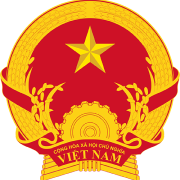
This was the 12th consecutive year it had secured first place in the ratings of Việt Nam’s 63 cities and provinces, according to a report of the Vietnam Association for Information Processing (VAIP) and the Ministry of Information and Communications’ Department of Information Technology.
It scored 1.00 in the category of IT application, leaving all other cities and provinces in its wake. The second highest score went to Quảng Ninh and Cần Thơ (both 0.48).
Đà Nẵng also ranked fifth in the national IT Industry Index, after HCM City, Hà Nội, and northern Bắc Ninh and Thái Nguyên provinces, and among the top 5 in the sale and distribution of IT products and services, together with Hà Nội, Cần Thơ, HCM City, and the Mekong Delta’s Long An Province.
The result is expected to lay a basis for the city to move to the next level in its digital transformation process.
During the 2021-2025 period, the city plans to ready itself in terms of infrastructure and databases for the full implementation of its smart city efforts and connection to the ASEAN smart city network. It will continue to promote the use of technologies from the Fourth Industrial Revolution in enterprises and in society.
Đà Nẵng looks to build a synchronous telecoms infrastructure system along with regional and inter-regional core networks, and expand the 5G mobile coverage to the entire city and broadband connection to all enterprises and households.
It will also upgrade the e-Government platform; complete the Local Government Service Platform (LGSP); connect with the National Government Service Platform (NGSP) for sharing data with ministries and central agencies; and put into operation a data service portal to provide information from the municipal government to the public and businesses.
The city aims to have at least 30 per cent of online public services using digital signatures in administrative procedures and have 100 per cent of public services performed online at the third and fourth levels.
Đà Nẵng was the first city in Việt Nam to launch an e-Government system in 2014, and transferred this system to 16 cities and provinces around the country in 2016.
A report revealed that Đà Nẵng’s e-Government system had been used by 225 agencies and 4,000 users.
The city had provided 1,200 online administration procedures, including one-stop shops, residential management, public transport, and water supervision, through the e-Government system, while free wireless internet services offer a maximum of 20,000 connections in public places, according to the city’s information and communications department.
Its IT infrastructure is available for smart connections for air control, water, garbage, meteorology and energy agencies. It can also provide earthquake and tsunami warnings, and data on flooding, erosion, sewage management, and food safety.
Launched in Việt Nam in 2005 and based on UN criteria, the Vietnam ICT Index assesses technical infrastructure, human resource infrastructure, IT application, online public services delivery, and the IT industry in cities and provinces.
It has secured a prestigious reputation over the years and serves as a foundation for the ministry and local authorities to adopt suitable policies to develop the ICT sector and the IT industry nationwide.
